A look around the old lead mine at Sheldon, Derbyshire.
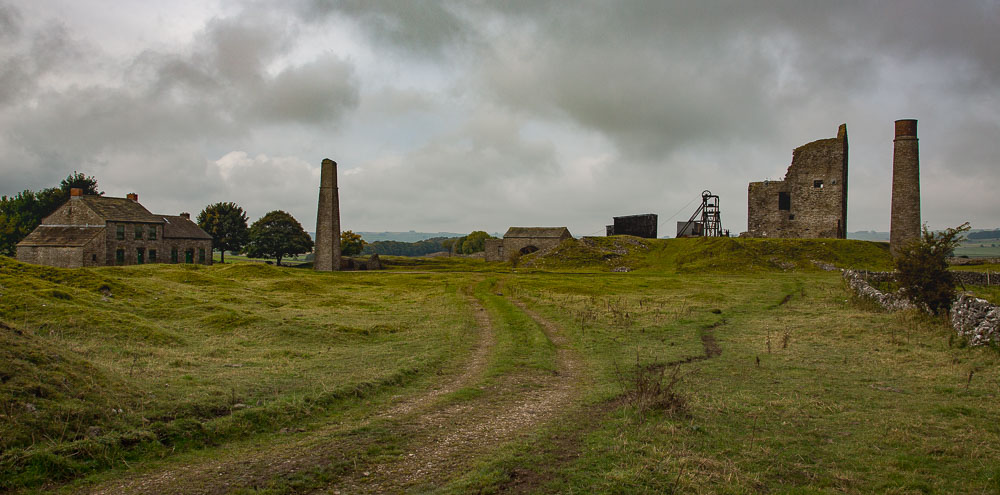
Lead mining has been carried out in the Derbyshire Peak District since Roman times and mining in the area of Magpie Mine has been around for 250 years. The mine opened and closed several times over the years due to fluctuations in the price of lead and increasing costs of keeping water out of the mine as the workings got deeper. Magpie Mine was the last lead mine to operate in Derbyshire when it finally closed in 1954. The mine workings we see today include a Cornish winding engine house and chimney, an older chimney for an earlier engine, the agent’s house and smithy and the explosives store. The main shaft is below the steel winding gear and descends for 222m (728 feet), although the bottom 47m (167 feet) are flooded. The whole area comprising the workings and buildings is now a scheduled monument under the Ancient Monuments and Archaeological Areas Act 1979.
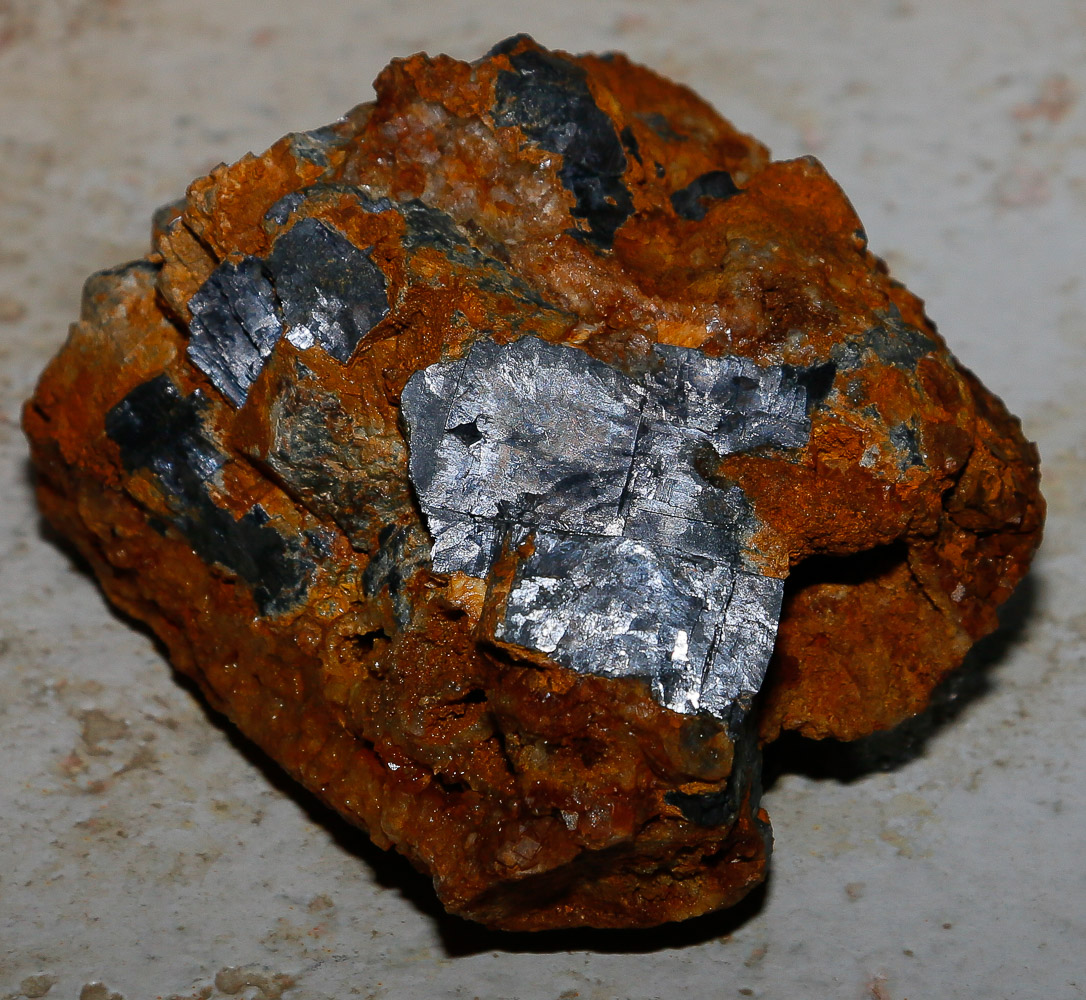
This is what they were after. This is a piece of Lead ore also known as Galena, it is Lead Sulphide (PbS) which is the primary ore of lead. This piece is about 12cm x 10cm x 8cm and weighs 1.8Kg. You don’t get much of this to the ton.
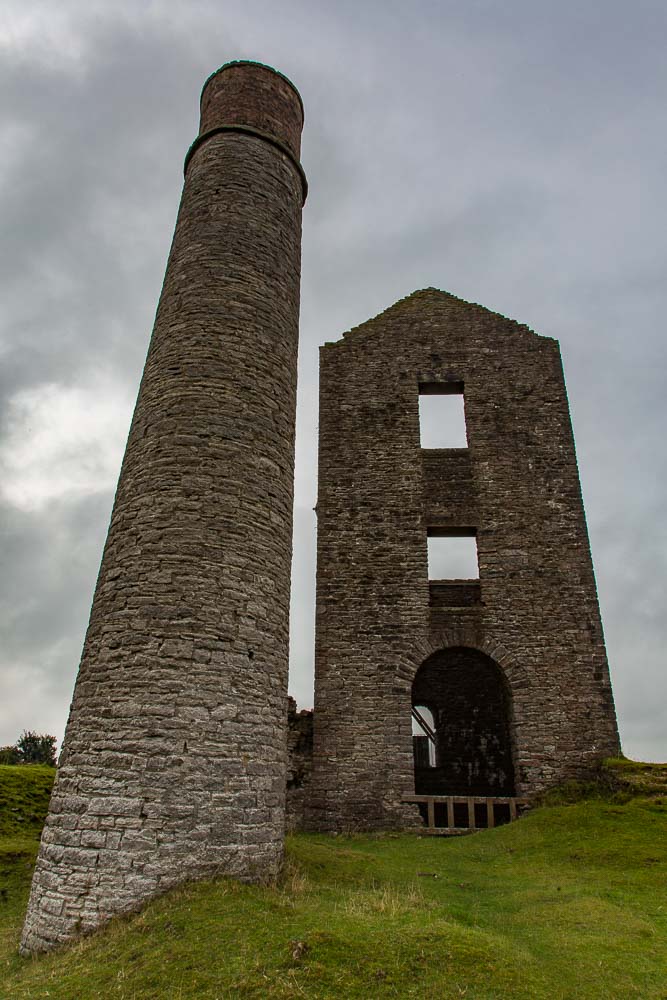
This building and chimney housed a Cornish beam engine originally installed in 1840 but replaced by a larger engine in 1869. Note the crudely extended chimney, presumably added to provide more draft. The function of these engines was to remove water from the lower reaches of the workings. The 1869 engine was capable of pumping 18,000 gallons of water per minute but by 1872 this was proving to be too costly with the steam engine consuming 80 tons of coal per week. Perhaps coal mining could have been more profitable.
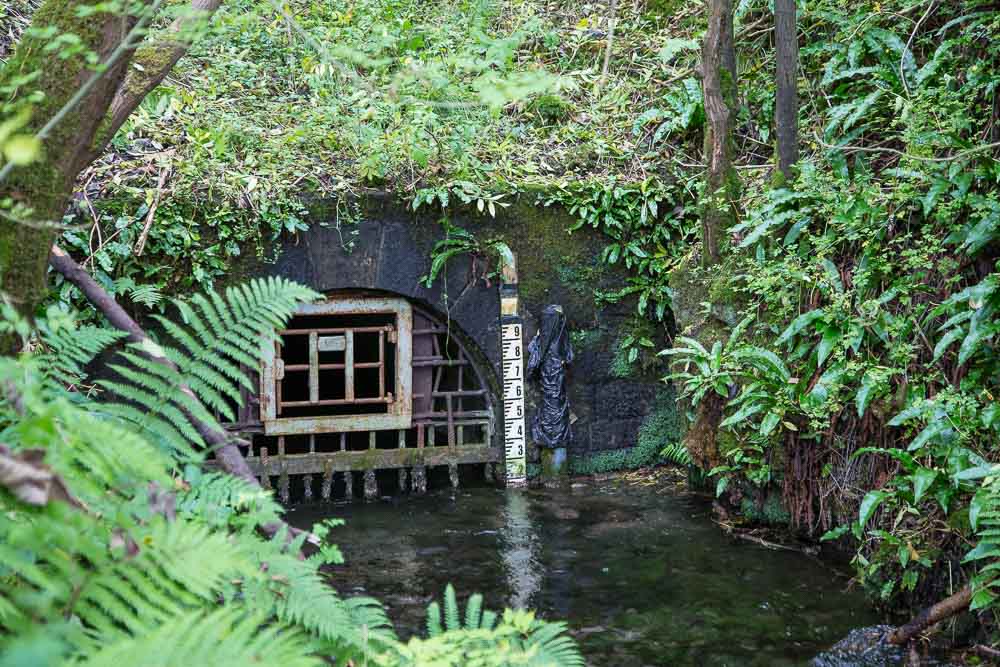
The water problem was huge. So much so that in 1873, despite the best efforts of the beam engine, work began on the digging of a drainage tunnel or “sough” to take the water away from the mine to the River Wye near Ashford-In-The -water 2Km away. The sough was completed in 1881 at a cost of £14,000 (£6.3m today based on projected labour costs) and from then on the engines only had to pump water from the levels below the sough. It was reported that during the excavation of the sough a natural cavern was found that was large enough to contain the spoil from the excavations for six months – hundreds of thousands of tons (Derbyshire Times 20th January 1883). The sough was successful at least for a time as in December 1883 the mine reported raising 60 tons of lead ore and a monthly profit of £135 (£100,000 equivalent based on the relative economic status between then and now). In the 1970s a roof collapse near the entrance to the sough caused a “blow out” where the pressure of water behind the blockage blew out part of the hillside creating a boulder-strewn gash in the valley side. In 1974 the Peak District Mines Historical Society (PDMHS) restored the sough and hillside fitting the gate and depth indicator at the entrance we see today.

The mine has seen a series of different winding and pumping engines to facilitate access to the mine workings and deal with the ever increasing water problem as the workings went deeper. The building with the winding wheel on the side served a horizontal winding engine built in 1869. The square chimney served a much older winding engine and this chimney was later used to provide an extra flue for the 1869 horizontal engine. The black corrugated iron shed on the right housed a later diesel engine in the 1950s that powered a ship’s winch taken from a fishing trawler.
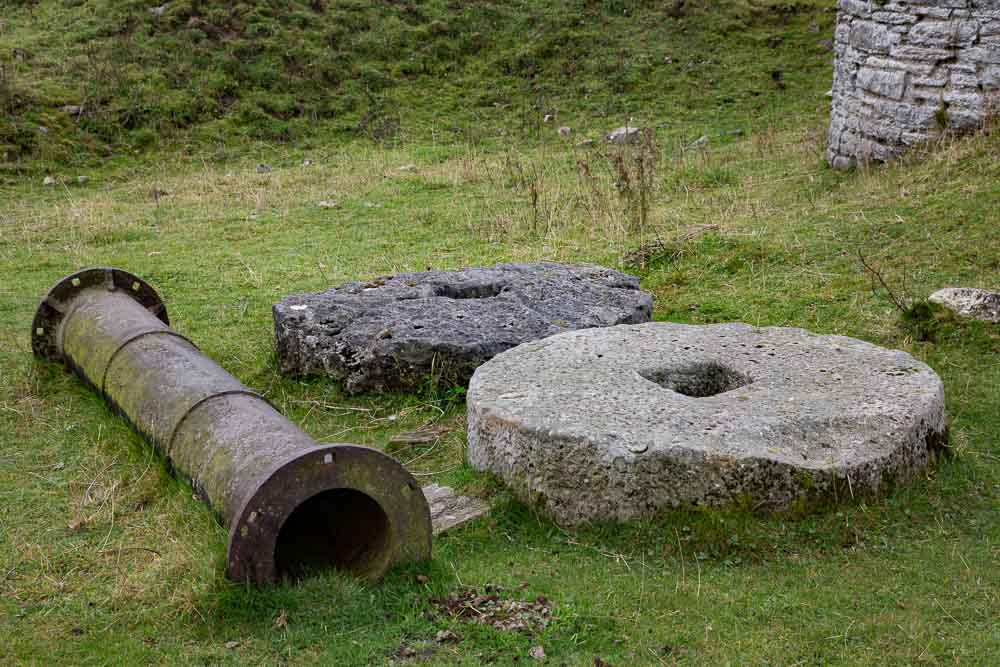
Around the mine workings there were other activities associated with processing the ore. Given the relatively remote location the more pure the product being transported off site the better in the interests of reducing costs. I imagine transporting lead ore via horse and cart was not an easy undertaking. Here mill wheels can be seen, presumably used to crush the ore.
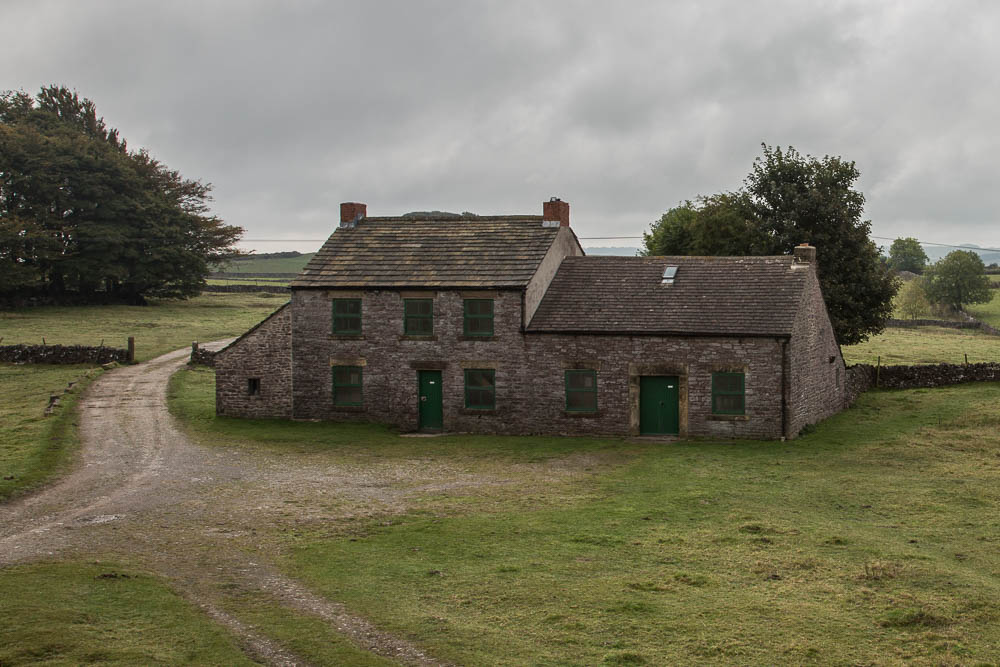
The Agent’s House (the agent being the mine manager) on the left and smithy on the right, constructed by John Taylor in the 1840s. John Taylor was a famous Cornish mining engineer of his day and was the mine’s manager between 1840 and 1869.
By 1883 the mine was struggling with increasing costs and a falling commodity price for lead. Some hope for the mine’s fortunes was found in early 1883 when a vein of zinc was discovered; zinc being very much in demand for the emerging electric battery industry. However, this was proved to be false hope and by July 1883 the Magpie Mining Company was wound up with liabilities of £3000 being divided amongst the shareholders.
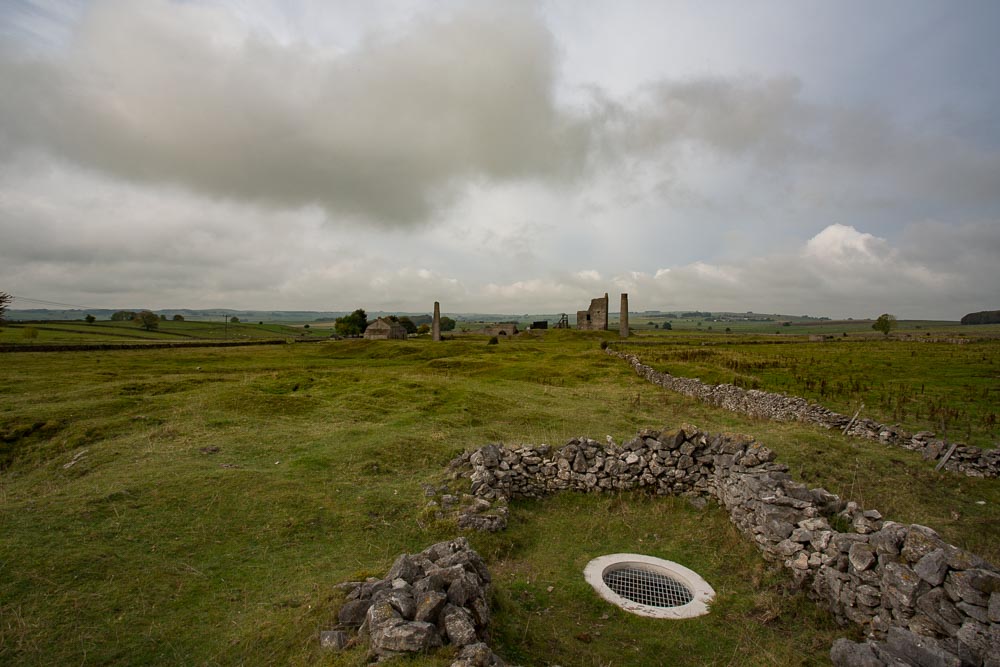
The Magpie Mine area contained other mines including Dirty Red Soil, Maypit, Horsesteps and Great Red Soil mines, all essentially working the same ore deposits. Breakthroughs from one mine into another were inevitable. I think the shaft seen in the photo above is the entrance to Horsesteps Mine and you can see how close it is to the main Magpie mine.
In September 1833 three workers from the Red Soil Mine were killed by inhalation of fumes / suffocation from burning straw and coal tar, lit by workers from Magpie Mine, to smoke out rival workers. At the inquest into the deaths 20 Magpie Mine workers were found guilty of murder and the Mine’s agent and proprietor were found guilty of accessory to murder. The men were subsequently jailed in Derby awaiting trial. Some of the 20 absconded, including the agent and proprietor, and ten Magpie Mine workers were tried for manslaughter (not murder) in March 1834 but were all acquitted on the grounds that “the mischief was not intentionally done” (Carlisle Journal 5th April 1834). In their defence the Magpie miners put some of the blame for the deaths against the “overlooker” of the Red Soil Mine, a Mr Knowles, who knowingly sent his men into a fume filled mine (Morning Chronical 27th March 1834).
A local fund was set up to pay compensation to the families of the dead workers and the donors included the Duke of Devonshire who donated £100 to the fund.
I have seen reports of the mine being haunted following a curse put on the mine by the widows of the dead Red Soil Miners. A “speleologist” from Sheffield reported ghostly happenings on his visits to the underground workings in the 1950s (Yorkshire Post 18th June 1855).
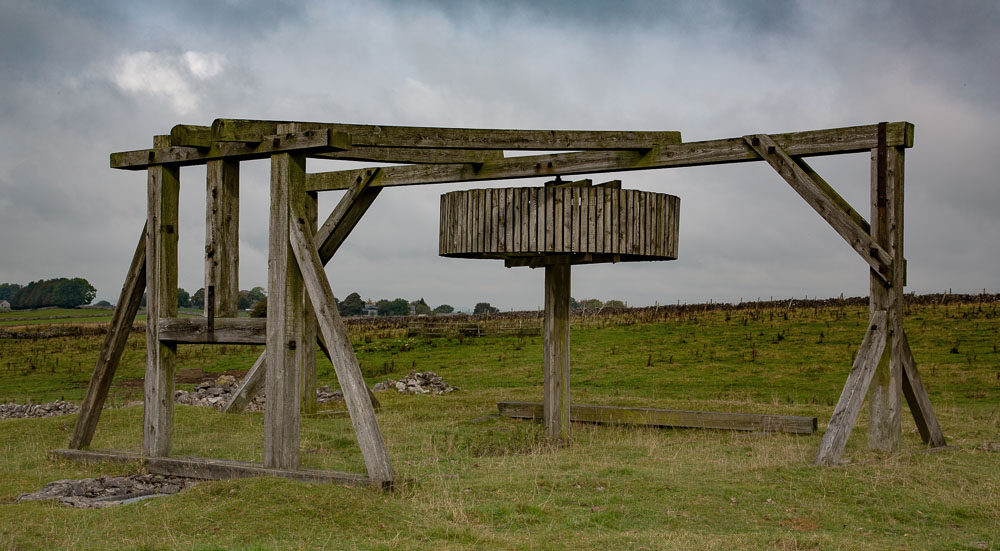
This is a replica Horse Gin which stands on the site of the Great Red Soil engine shaft originally sunk in 1831. This used horsepower to raise the ore and men to the surface in the times before any mechanical engines.
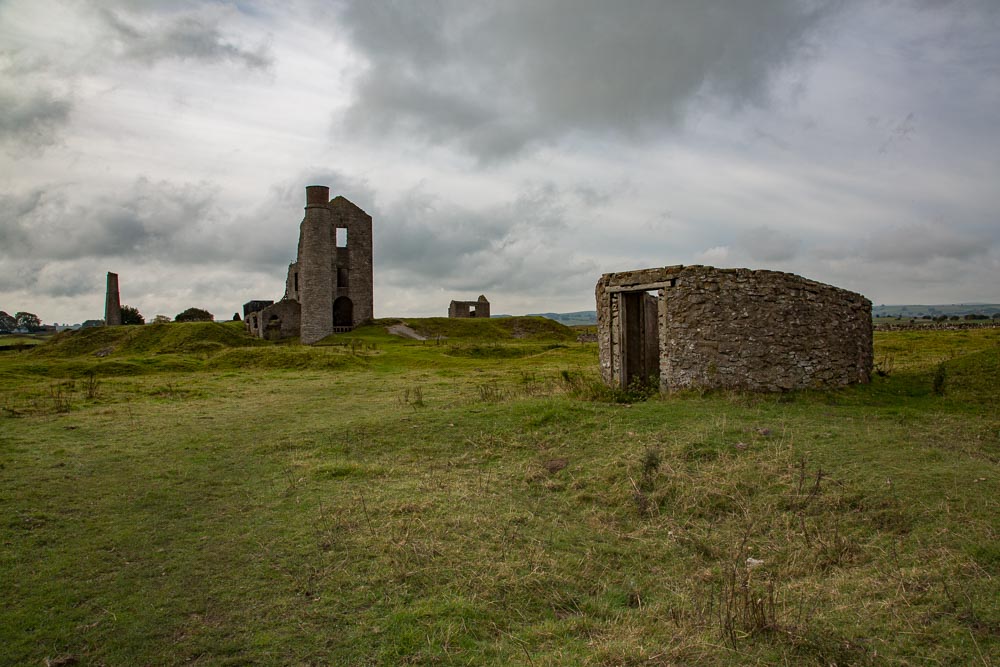
The low building in the foreground is the powder house, built in the 1840s and used for the storage of black powder (explosives) for use in extracting the ore underground. Note that it stands alone and is the furthest building away from the agents house and smithy.
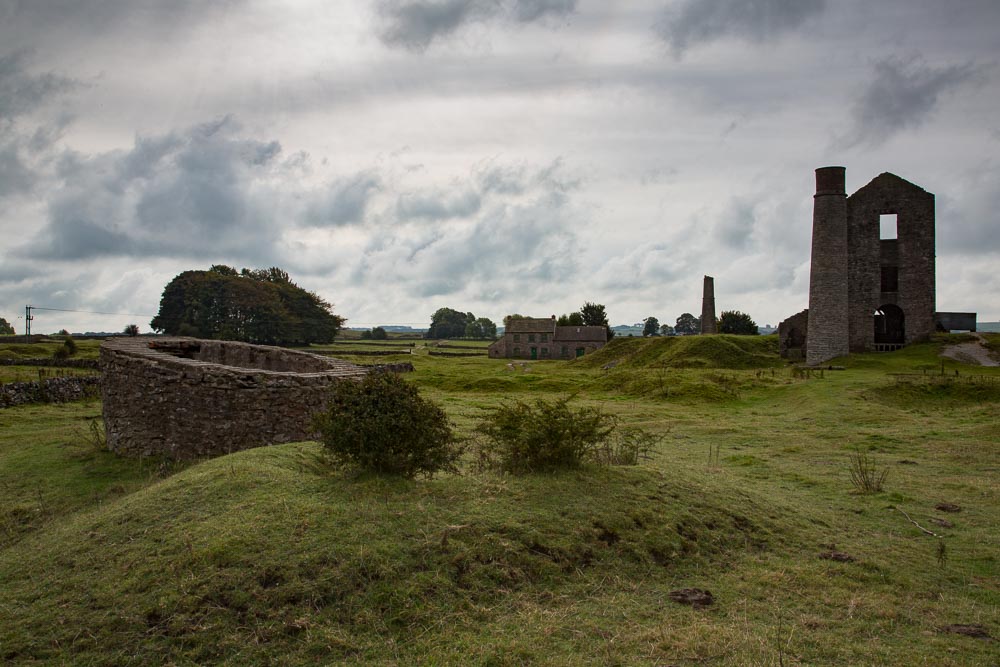
Note the meter thick walls of the powder house. I guess it would have had a fragile roof, allowing any unintended blast to blow up and away instead of out through the walls thus reducing the risk of shrapnel damage to surrounding people and buildings in the event of an accident. This building was built during John Taylor’s management who was responsible for other introductions of a health and safety nature such as safety helmets and safety fuse.
In the 20th Century, the mine saw its peak of activity during the 1st World War, presumably and macabrely due to an increased demand for lead. By the 1950s the mine was being worked by only 5 people with just two of those working below ground before its final closure in 1954.
The following pictures were taken by me in 1977 when I was a teenager and into exploring old lead mines and potholing/caving. Yes, it was dangerous, try telling that to a teenager with nothing but disco and flared trousers to keep him amused and please don’t tell my mum. We followed the sough from the exit at the River Wye all the way to the bottom of the main shaft. This was a walk, sometimes stooping, in mostly waist-deep water.
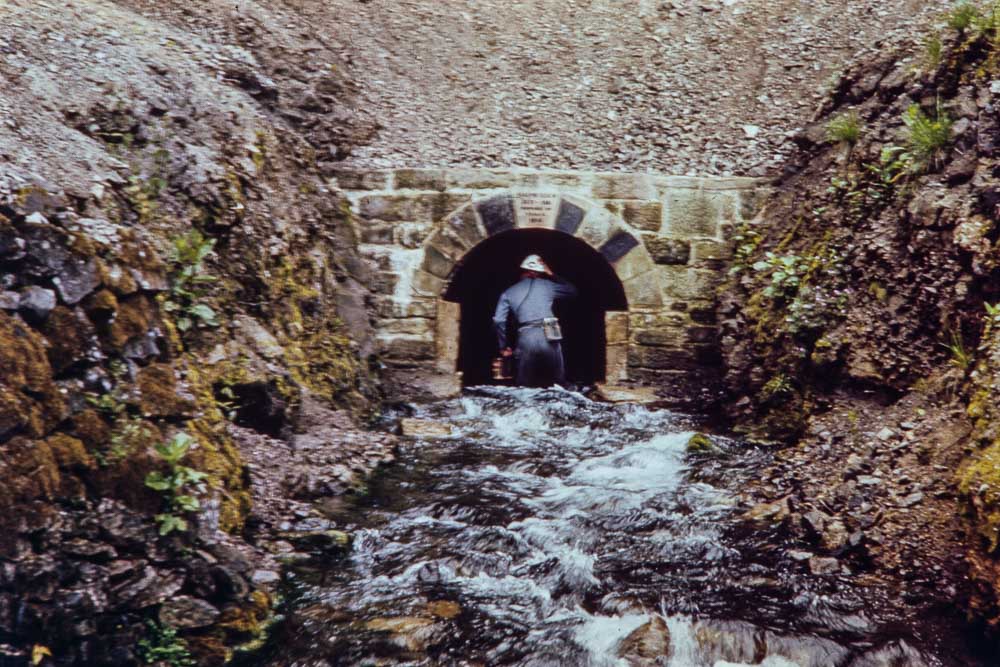
The photograph above shows no gate in place. However, my memory tells me that I must have done this trip twice as I distinctly remember lifting the bottom half of the (unlocked) gate to gain access and that must have been on a different trip to this one. Doing the trip on two separate occasions is quite possible, this sort of trip was a regular occurrence. My mates and I were members of the PDMHS and regularly “worked” as volunteers at Goodluck Mine near Matlock Bath and occasionally in the PDMHS museum.
Please note that today entry into the mine workings may be a criminal offence under the Ancient Monuments and Archaeological Areas Act 1979; the mine and its workings have been scheduled as a protected monument since 1974 so I don’t know whether we were committing a criminal offence back in 1977 or not. I hope not! Either way, what is illegal under the 1979 act is to:
- Destroy or damage a scheduled monument
- Do any “works” which would demolish, damage, remove, repair, add or alter it (including agriculture, forestry, flooding and tipping) without previous permission from the Secretary of State or devolved equivalent, given through formal written “Scheduled Monument Consent”
- Use a metal detector without prior consent
- Remove any historic or archaeological object from the site without prior consent.
Please rest assured that we did none of the above.
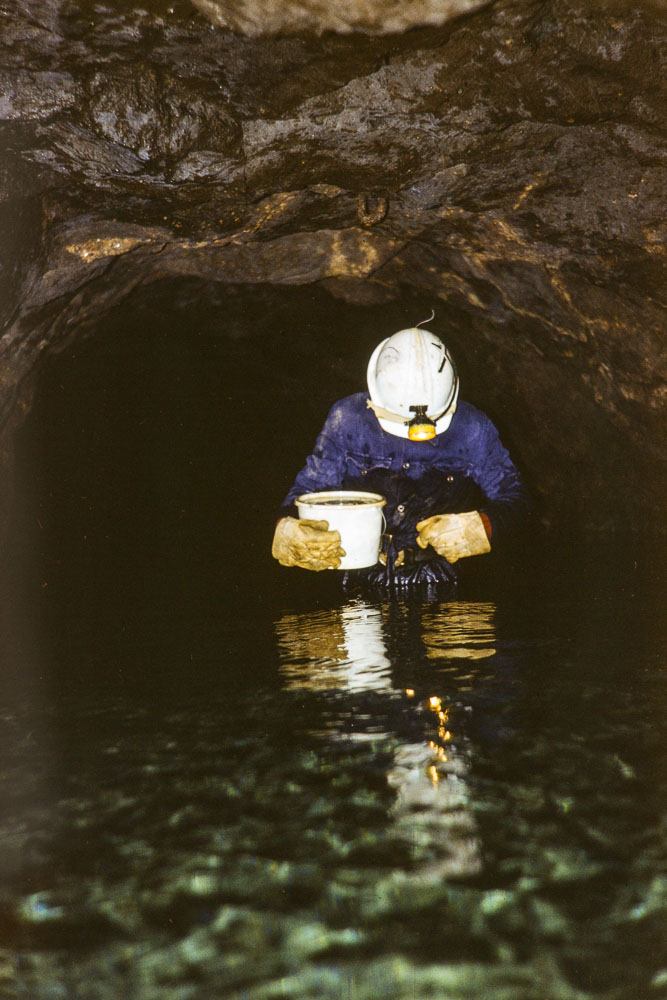
One of my fellow explorers showing the water depth and tunnel height not far from the river exit. You can see that the roof, here at least, was solid rock. In other places, the roof was supported by huge iron rings which although rusty appeared in good condition. However, there was one ring which had been flattened by a roof collapse which had caused the blow out some years previous to our visit. I remember being a little alarmed by this but it didn’t put us off further exploration. I hope my mum isn’t reading this…
In case you are wondering, the bucket is what we carried our cameras in. Cushioned with news paper and with an airtight / watertight lid these had the advantage of floating on the water. In those days I had either a Zorki 4K or a Pentax MV, I cannot now remember which one I used here.
My colleague is wearing… old clothes beneath a cotton boiler suit. No wet or dry suits for us!
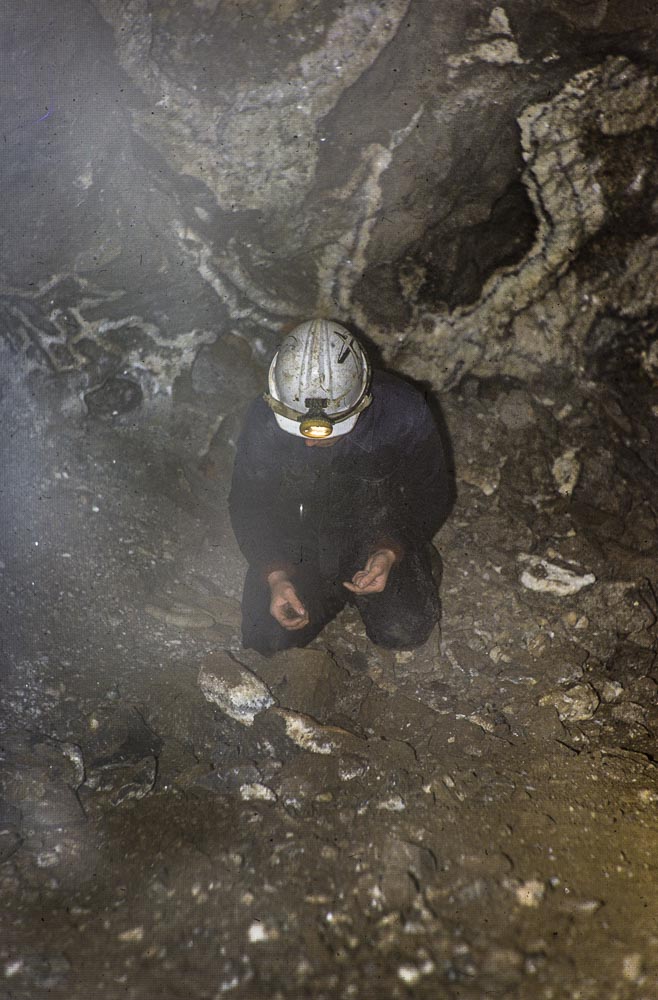
This is a vein of zinc ore which could be that which is referred to having been discovered in 1883, although the sough cuts through it and the sough was completed in 1881. Could it be that mine workers desperate to keep their shareholders happy revisited an earlier discovery of zinc following the fluctuations of the metal markets? From memory there was evidence that the zinc deposits had been mined laterally out from the main drainage channel.
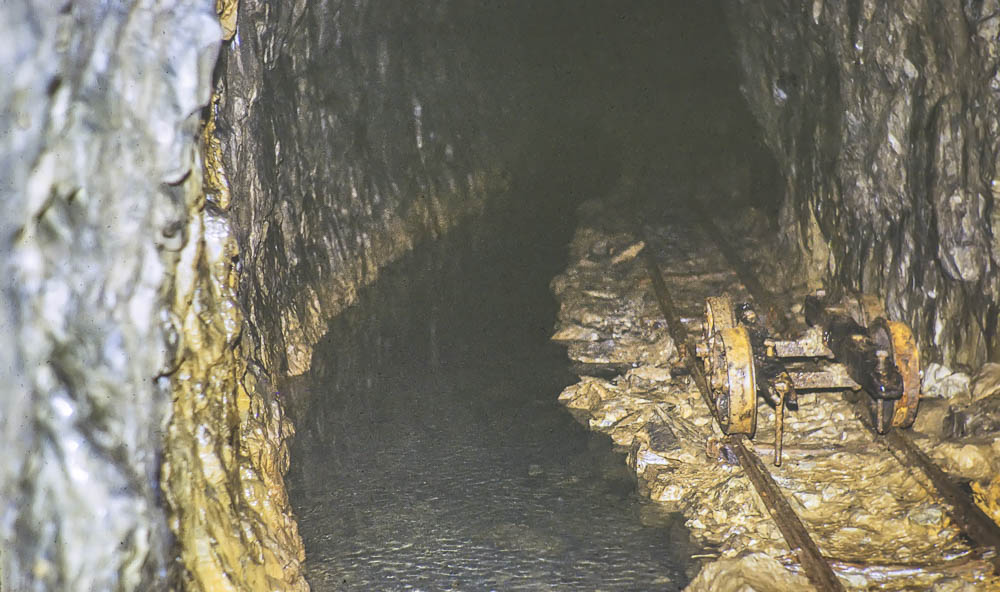
Towards the far end of the sough (furthest away from the river) there was a rail track complete with this bogie. Presumably this was either for transport of the zinc ore to the main shaft or for removal of spoil from the construction of the sough. The rail track only serviced the last 500m or so of the sough. Here the width and height of the sough appeared to narrow compared with that at the River Wye end; perhaps rising costs and the time it was taking to drive the sough resulted in alterations to the original design.
We followed the sough all the way to the main shaft and some of it’s connecting working levels but did not go any further. I can remember that the bottom of the shaft was piled high with items that had been dropped down it over the years. I wish I had taken a photograph of the resulting scrap mountain but for some reason I didn’t. I remember large quantities of wire (barbed and large mesh), rusty barrels and at least one large red propane gas cylinder – someone had fun chucking that down the shaft.
The water came up from the continuation of the shaft down to lower levels and flowed out along the sough.
More photographs of Magpie Mine including some underground pictures from more recent Sough explorations and some 1974 photos of the sough tail repair can be found here – just put “Magpie” in the search box.

Absolutely fascinating. I put a photo of the mine on facebook and my friend Andrew Fraser said he did some work on the sough, I assume when it blew out.
Absolutely fantastic!
We were fortunate to be able to visit Magpie Mine in May 2022. It’s situated in beautiful surroundings too.
Erik Jan
The Netherlands